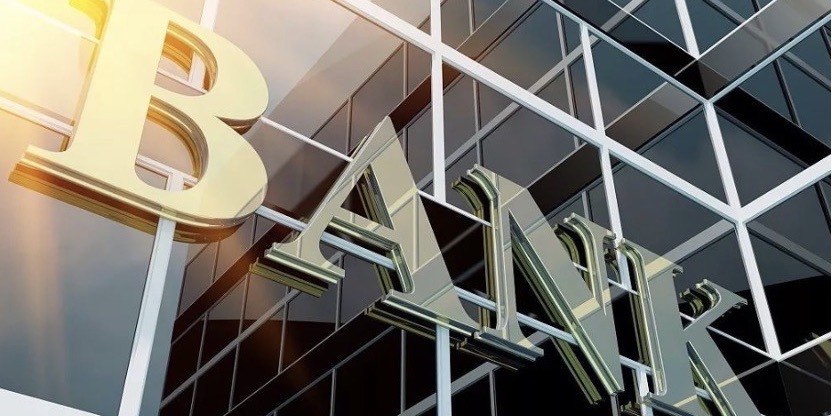Future of Banks: From The End of Banking
Dec 12, 2023 By Aynsley Moore
First, solving the problem of information asymmetry in the credit process. If the supply side and the demand side of capital are not familiar with each other, there will be a huge information asymmetry. The demand side knows its own situation better, while the supply side knows little about the opposite. As a result, each loan has a higher cost such as time-consuming and laborious preliminary investigations, monitoring of the cost after the loan, and recall after the loan expires. The bank transfers the above problems from the fund supplier to itself. The bank has established various mechanisms to solve the information asymmetry. The supplier only needs to deposit the fund in the bank, without worrying about whom the fund is lent to or whether the loan can be repaid on time.
Second, matching the different needs of both borrowers and lenders. Depositors may provide short-term funds, and the scale of personal funds is limited. However, the demand side may need long-term and large-scale funds to invest. Without a bank, the mismatch between the supply of funds and the demand period and scale makes it difficult to reach a loan contract. As an intermediary agency, the bank provides the time limit and scale of the fund conversion, so that the fund can be smoothly transferred from the supply side to the demand side. In terms of maturity, banks provide “contractual liquidity”, whichmeans depositors can withdraw funds at any time according to the deposit maturity (such as current deposits); loan contracts between market entities lock the maturity of funds and in order to obtain liquidity from the market, the entity can only transfer the loan contract. If the contract transfer is difficult, market liquidity is more difficult to achieve.
Third, payment services provided by banks facilitate transactions. After depositing the funds in the bank, the depositor can conveniently use the funds to conduct transactions through various approaches such as checks, transferring money, letters of credit and other convenient payment tools.

Mechanism of bank profitability and the source of risk
The creation of endogenous currency through credit expansion is the source of bank profits and the root of risk. Creating money through credit is actually the currency multiplier. Banks generate deposits through loans, then make loans and generate new deposits. According to the deposit reserve ratio, banks can repeat this process unceasingly, and generate profits in this process, expanding the bank’s balance sheet at the same time.
At present, all countries are implementing a fractional reserve system, which means that banks keep a certain percentage of deposits in preparation for customer withdrawals, and other funds can be used for loans. Banks hope the reserve to be lower, so that they can have more funds for loans, and thus get more profits. However, a too low reserve ratio may cause banks to fail to meet the temporary withdrawal needs of deposit customers. In the event of an abnormal shock, if the bank cannot meet the withdrawal needs, a run will occur, which is an eternal threat to banks. Bank runs may have a chain reaction and eventually disrupt the operation of the financial system. In the worst case, panic and run in the banking industry may lead to a complete collapse of the financial system, pushing the economy into a deflationary spiral and severe recession.

In order to solve the problem of bank runs, the government has introduced various measures such as deposit insurance and the central bank as the lender of last resort, but these measures come at a price. In the case of limited liability, if the capital is small, banks may have excessive risk exposure and create a moral hazard problem. It means that responsible actors do not bear all the consequences of actions, and while maximizing their own utility, they conduct actions that are not conducive to others.
Therefore, in order to restrain banks from taking excessive risks, a direct idea in the supervision is to continuously increase the capital requirements of banks, thereby increasing the relevance of interests and reducing moral hazard issues. Looking at the various regulatory measures for banks, the ever-increasing capital requirements are the main thread. Whether it is Basel I, II, or III, relevant regulatory measures have been introduced and refined around bank capital. There is a simple assumption in economics: given that other conditions remain the same, raising the bank’s capital requirements can play a certain role. But unfortunately, other conditions are not constant. The development of technology enables banks to find various channels to circumvent capital regulatory requirements, which has created the dilemma of bank regulation.

Dilemma of bank supervision
Information technology has changed the ecology of the financial industry, and has also reshaped the way banks operate, providing various possibilities for banks to evade supervision. One of the requirements of capital supervision is to continuously increase the capital adequacy ratio (CAR) of banks, which is generally expressed as the ratio of the bank’s own capital to risky assets. In order to increase the CAR, banks either directly increase the capital level or reduce the scale of risky assets. The former requires investment of real money and the latter can be realized through various approaches. A more convenient method is to remove some risky assets from the bank’s balance sheet, which will maintain the CAR and banks can continue participating in risky activities. The release of assets actually creates the so-called shadow banking.
Generally speaking, shadow banking refers to various types of banking services that operate outside the supervision of banking supervisory agencies. Information technology has provided conveniences for the existence and development of shadow banking. Banks can perform operations such as segmentation, securitization, and listing of asset businesses at a lower cost, thereby making it easier for regulatory arbitrage. However, shadow banking has not changed the fact that banks do take risks. It’s just that some risks are not reflected in the balance sheet. Here’s a new question: should shadow banking be included in the regulatory framework?
This is actually the issue of regulatory boundaries. Observing the financial supervision practice in recent years, we can find that unless certain businesses are explicitly prohibited, unsupervised institutions and businesses need to be continuously included in supervision in order to ensure the stability of the financial system. It is a great challenge, and even caused an “unbearable weight” for regulators.

Technological development replaces the role played by banks.
We have explained the reasons why we need banks including resolving information asymmetry, matching the needs of different borrowers and lenders, and providing payment convenience. The above-mentioned reasons for the existence of banks can be resolved in the era of information technology, and the role of banks can also be replaced by other means. For example, the development of big data technology makes it easy for us to extract meaningful information for credit risk calculation, providing a solution to information asymmetry. It also enables credit contracts to be issued in very small denominations, which solves the problem of mismatch between the supplier of money and the fund demander. At the same time, it can also improve the market liquidity of the credit contract. The funder can easily transfer the credit contract to obtain liquidity when it needs funds. In addition, the currently emerging payment methods make payment convenience no longer an advantage of banks.
It seems that we can easily think of many financial services, in some of which we are also engaging, to replace banks. The Internet lending platform is one of them, which has been developing in full swing in the past few years. There are huge financial risks beneath its wild growth. Money market funds are also a business that we are familiar with. With the gradual decline of interest rates, the attractiveness of bank deposits gradually decreases while the interest rates of money market funds are slightly higher than deposits. It prompts those seeking stable income to invest in money market funds in order to obtain higher returns than deposits as well as better liquidity. For another example, although we cannot fully predict the final effect of the digital currency projects currently promoted by countries, they are bound to have a profound impact on the banking industry and the entire financial system.

End banking business through regulatory rules.
Current supervision is always struggling with border issues. Supervisors can only adjust and expand the scope of supervision in terms of the development of the banking industry. As time goes by, banking supervision tends to become more complex and stricter. The banking industry has lost control due to the digital revolution, so getting rid of the banking industry is an important step forward, which, however, cannot be achieved through mandatory administrative intervention, but through specific accounting rules.
In order to prevent banks from risks, a direct idea is to require banks to hold enough equity capital. Technically, they require banks’ assets to be greater than liabilities, which means equity capital is a positive number. It also requires banks to hold enough liquid assets to cope with withdrawal requests. However, this is also problematic, because banks hold a large portion of financial assets, which may shrink as circumstances change, meaning that in the event of a negative shock, there will be insolvency. For this reason, it is necessary to redefine the relationship between assets and liabilities. The author believes banks’ physical assets should be required to be no less than the value of liabilities, converting assets into physical assets, thereby reducing the risk of fluctuations in the value of financial assets.

Furthermore, systemic solvency rules are the killer to end the banking industry. According to this rule, the value of a bank’s physical assets must be greater than or equal to the value of its liabilities in the worst financial situation, which means that all financial events related to the nominal obligations arising from contingent financial contracts occur when the company’s equity value is most unfavorable. This rule actually limits the ability of banks to increase assets through loans, because loans are financial rather than physical assets. of banks. The value of many financial assets, including loans, may be zero while its liabilities may tend to be infinite in the worst financial situation. Therefore, this rule puts an end to banks creating endogenous money through credit, which is the source of bank risk.
However, the above opinions should also be viewed objectively. After all, the financial industry is operating risks. As an important part of the financial system, banks cannot be completely risk-free. In fact, it is important to encourage banks to actively control risks instead of chasing high risk or completely avoiding risk. If there is no risk in the financial industry, it will lose its colorful side. Finance is the bloodline of the economy. Banning banks from lending through endogenous currency completely imposes restrictions on banks, but will this have a greater negative impact on the real economy? The answer seems to be yes.
-
 Banking Oct 30, 2023
Banking Oct 30, 2023Everything You Need To Know About Letter Of Credit
A letter of credit is a document that outlines the terms and conditions of a transaction between a buyer and a seller. This document is issued in the form of a letter
-
 Mortgages Nov 29, 2023
Mortgages Nov 29, 2023Do You Know: How to Pay Off Your Mortgage Early?
Some homeowners are eager to pay off their mortgage early, relieving the emotional burden of debt and saving money on interest. In retirement, one way to improve one's financial situation is to pay off one's home loan early. This is helpful in general, but it becomes particularly useful when switching to a fixed income. No matter how you feel about it, paying off your mortgage early can save you a lot of interest payments.
-
 Mortgages Nov 10, 2023
Mortgages Nov 10, 2023Average Mortgage Debt
According to the estimates provided by the Federal Reserve Bank of New York, the total amount of mortgage debt carried by the American population is 11.39 trillion dollars as of the end of June 2022. This is an increase of $945 billion on an annual basis and is a reflection of the fact that property prices have increased, forcing more Americans to borrow more money to purchase a home.
-
 Investment Jan 29, 2024
Investment Jan 29, 2024AARP Life Insurance 2024: An Essential Review for Informed Decisions
AARP Life Insurance, offered by New York Life, provides senior-focused policies with no medical exam, flexible coverage options, and exclusive benefits for AARP members. Read more.
